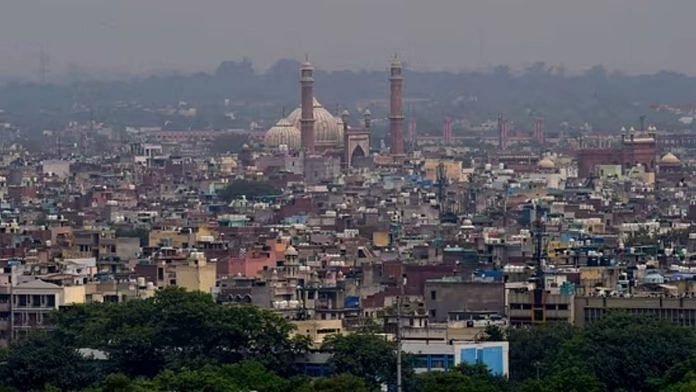New Delhi: A national authority on urban and regional planning headed by the Prime Minister to leverage the economic potential of cities, large scale recruitment of urban planners, and a law to regulate urban planners — these are among the key recommendations of the high-level committee on urban planning that was constituted last year by the ministry of housing and urban affairs (MoHUA), ThePrint has learnt.
The committee was announced in Budget 2022 by Finance Minister Nirmala Sitharaman.
In its 84-page report titled Pathways to Amrit Kaal: Envisioning and realising a new future for Indian cities — seen by ThePrint — the committee has addressed issues plaguing cities struggling to cope with rapid urbanisation.
The report was submitted to MoHUA in April this year and the ministry held its first meeting with committee members Monday to discuss the report.
With more than 50 per cent of the country’s population expected to be living in urban areas by 2050, ministry officials said, there was a need to address issues being faced by cities.
The report highlights the need for a reevaluation of existing urban development policies and norms. It also emphasises the importance of setting up institutional mechanisms for better monitoring and developing cities as centres of economic growth.
Also Read: Who plans Indian cities? Development Authorities who still follow colonial masterplans
Autonomous urban planning body under the PM
The committee has recommended setting up of a ‘National Urban and Regional Planning Authority (NURPA)’ — an apex advisory body headed by the PM — to provide guidance to all ministries, departments and agencies on urban and regional planning and development in the country, the report says. The NUPRA will have urban planners, government officials, and subject matter experts, among others, as its members.
“The key role of the organisation would be to act as an apex technical advisory body providing guidance to all the ministries, departments, and agencies in the country, at all levels, in matters concerning urban and regional planning and economic development. Well managed cities can become pillars of economic growth for our country which should be catalysed by this authority,” the report states.
The recommendation, the report says, is on the lines of Singapore’s Centre for Liveable Cities and Urban Redevelopment Authority. The two authorities are responsible for research, capacity development and devising a comprehensive planning approach to develop strategic plans to guide Singapore’s physical development in a sustainable manner.
Apart from a national authority, the committee has also recommended that ‘Economic Development Councils’ be created in all cities with a population of over a million, and ‘District Economic Development Councils’ be established in all districts with less than a million population to leverage the full economic potential of cities.
Capacity building, law to regulate urban planners
The biggest hurdle in planned development of cities is the acute shortage of urban planners.
According to the report, a majority of the tier-2 and tier-3 cities do not have access to qualified professional urban planners and the “ratio of urban planners ranges from 1:500,000 to 1:10,00,000 against a recommended ratio of 1:30,000 to 1:50,000”.
“Urban capacity situation is abysmal in hill areas like Uttarakhand, Northeast, coastal, forest and island areas due to non-availability of urban planning capacities and capabilities. States and cities are unable to leverage the opportunities linked to urbanisation,” the report said.
In September 2021, this issue was flagged by NITI Aayog in its report titled Reforms in Urban Planning Capacity in India. In it, the federal think tank had recommended the need for building capacity and a regulatory framework for urban planners. The NITI Aayog report had added that 63 per cent of the 7,933 towns and cities (urban settlements) in India don’t have a master plan.
Moreover, over 12,000 posts for town planners are required in the state town and country planning departments, said NITI Aayog report, adding, “This is in stark contrast to the present situation. There are fewer than 4,000 sanctioned positions for ‘town planners’ in these departments, half of which are lying vacant.”
The high-level committee has recommended that the central government should allocate funds to states over a five-year period to recruit 2,000 urban planners at junior level, 850 mid-level urban planners, and 350 multi-disciplinary experts.
It has also recommended that the Union government introduce a ‘Town and Country Planners Bill’ to regulate urban planning profession and practices, and suggested various initiatives to train urban planners.
City-regions as economic gateways and riverfront development
The committee has recommended ‘city-regions’ be developed in such a way that they serve as an “economic gateway to attract foreign investment and talent”. It has also proposed a national economic gateway programme, under which 25 city-regions will receive Rs 200 crore each for a period of five years for its implementation.
“The economic gateway programme will comprise an economic vision accompanied by metrics such as GDP, investments, skill augmentation and jobs, policy framework and projects needed to realise the economic vision, empanelment of best-in-class agencies for technical support, case studies for continuous learning and high visibility communication strategy for branding, and partnerships and collaborations. Blue-Green ecological master plans and integration of informal economy and emphasis on skill building would be essential components of the economic gateway program,” the report said.
Referring to the Sabarmati Riverfront Development project, the committee has recommended more such projects be taken up across the country. For this, it has identified 25 cities which, it says, should be provided funding to rejuvenate their respective riverfronts.
(Edited by Zinnia Ray Chaudhuri)
Also Read: Smart city technologies can tackle India’s urban explosion. But key questions must be asked



